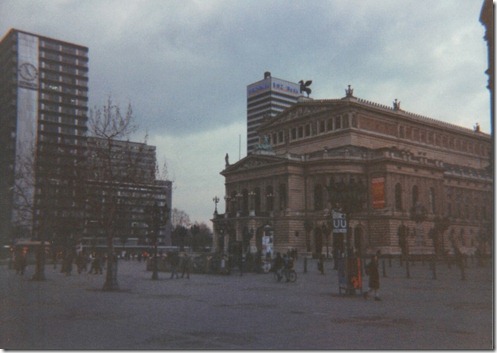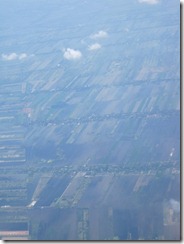My wife brought to attention tonight’s topic, the New 7 World Wonders. I am a huge fan of the 7 World Wonders of the Ancient World, a list originally compiled by the Greeks around the Second Century, B.C. Of the original 7 World Wonders, only the Great Pyramid of Cheops at Giza, Egypt exists today. (Contrary to popular belief, only the Great Pyramid is designated as a Wonder, not the entire site at Giza.) The other six Wonders have vanished with age and assaults by natural disasters, invaders, and vandals. Interestingly, the Acropolis in Athens, one of the candidates on the list of New 7 World Wonders, is not a World Wonder of the Ancient (Hellenic) World. The other six Wonders were the Pharos Lighthouse, the Hanging Gardens of Babylon, the Statue of Zeus, the Temple of Artemis, the Mausoleum at Halicarnassus, and the Colossus at Rhodes.
My favorite Ancient Wonder is the Pharos, or Lighthouse of Alexandria (290 B.C. – 1323 A.D.), which dominated the harbor in Alexandria, Egypt. A massive marble and granite lighthouse, it once dominated Alexandria, one of the world’s great cities from its founding by Alexander the Great until the Middle Ages. My wife and I have visited both the Great Pyramid and the site of where Pharos once stood (I hope visit the other sites someday as well). Where Pharos once stood now stands an old Muslim fort known as Qaitbay. When we were in Alexandria in 2001, I remember watching crews of Egyptians beautifying the site by cutting and assembling a red granite promenade. It broke my heart. I was positive that the granite came from the original Pharos Lighthouse. When the lighthouse was toppled by an earthquake in 1323, it fell into the harbor. There it lay undisturbed until recently, when its remains were unearthed by archeologists. Rather than dismantling Qaitbay and rebuilding the lighthouse, the City of Alexandria apparently decided to reuse the marble to beautify the waterfront. As a history buff, I am saddened that one of the Seven Wonders was used to build a decorative promenade.
On January 1, 2006, the Swiss-based New 7 Seven World Wonders recently unveiled 21 finalists for the distinction of New World Wonder. According to the Korea Times, the finalists were drawn from the 529 heritage sites on the UNESCO World Heritage List. Korea has seven World Heritage sites, none of which made the final list of candidates (I think Bulguksa Temple would have been a good finalist). The rules specify that the final list of World Wonders must feature one world wonder from each continent except Antarctica, and no single country can have more than one site. Hence, the Great Wall of China made the list, but unfortunately the Forbidden City in Beijing did not make the list. Based on these rules, it’s obvious that the Sydney Opera House will be named a World Wonder because it is the sole finalist from Oceania. This is unfortunate, because many sites in Asia, including the Taj Mahal and Angkor Wat, certainly deserve to be called World Wonders. Assuming the Great Wall of China will be initially chosen as Asia’s World Wonder, only one other Asian site can be designated a New World Wonder. I am partial to potential Wonders that stand the test of time. Hence, I would choose Angkor Wat and the Taj Mahal over the Sydney Opera House.
If I were to choose the New 7 World Wonders based on the Foundation’s criteria, I would include these sites on my own list of World Wonders:
- Pyramids of Giza (Egypt)
- Great Wall (China)
- Acropolis (Greece)
- Chichen Itza (Mexico)
- Macchu Picchu (Peru)
- Sydney Opera House (Australia)
- Angkor Wat (Cambodia)
If I could change the rules, I would replace the Sydney Opera House with the Taj Mahal (India). Angkor Wat edges out the Taj Mahal ever so slightly. Honorable mentions include the Eiffel Tower, the Statue of Liberty, the Statues at Easter Island, and the Colosseum. Each is significant but a close second those on the list above.
I also believe the Foundation missed a few potential World Wonders, modern architectural marvels worthy of the designation "World Wonder." These include the Chunnel connecting England and France, the Confederation Bridge linking Prince Edward Island to the Canadian mainland, the Golden Gate Bridge in California, the Laerdal Tunnel in Norway, the Petronas Towers in Malaysia, and the Pearl of the Orient Tower in Shanghai, China. Perhaps the Foundation should have two lists–one for ancient sites such as the Pyramids, and one for modern marvels such as the Statue of Liberty and Eiffel Tower. Age really does make a big difference.
|
 |





